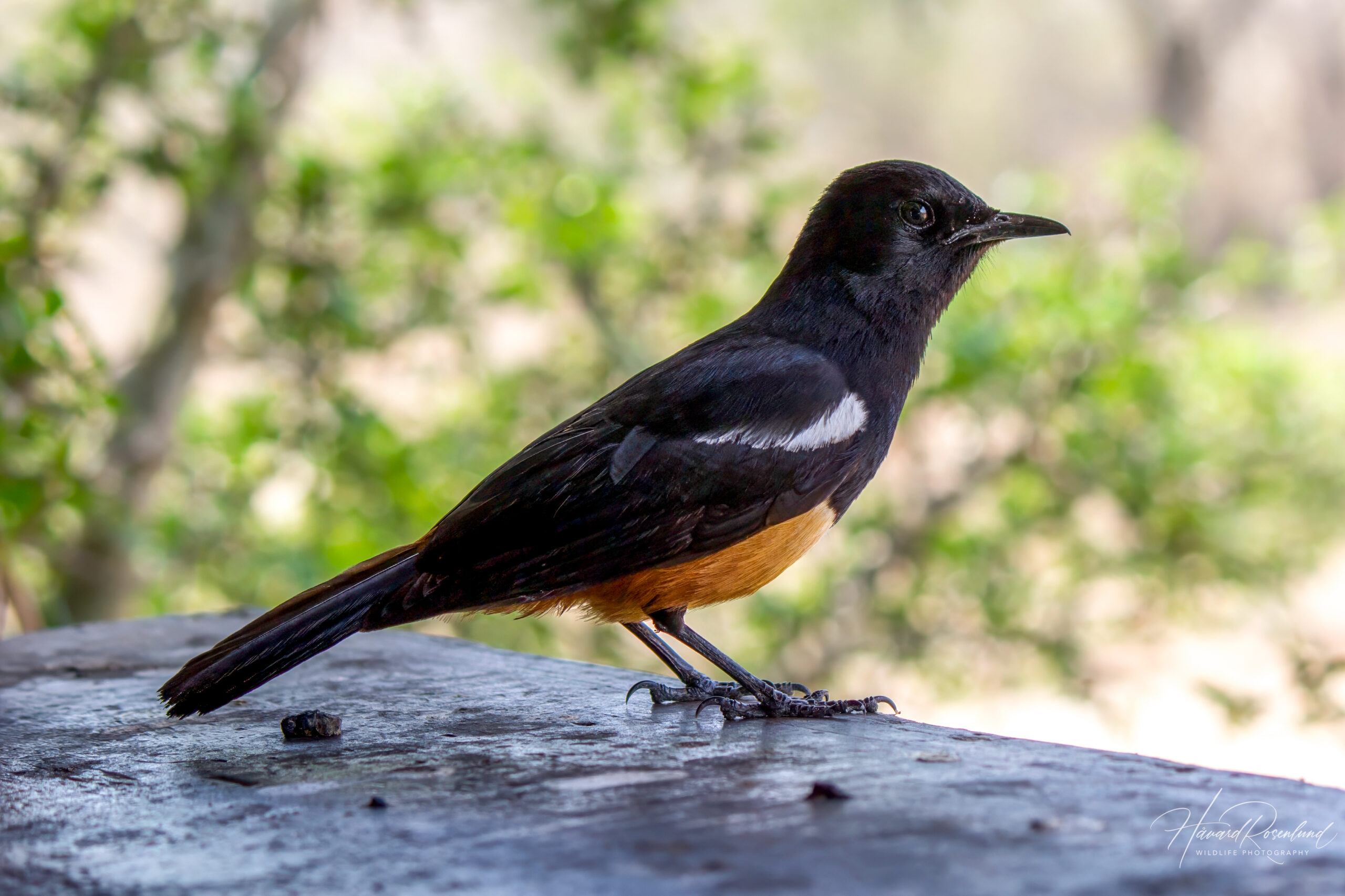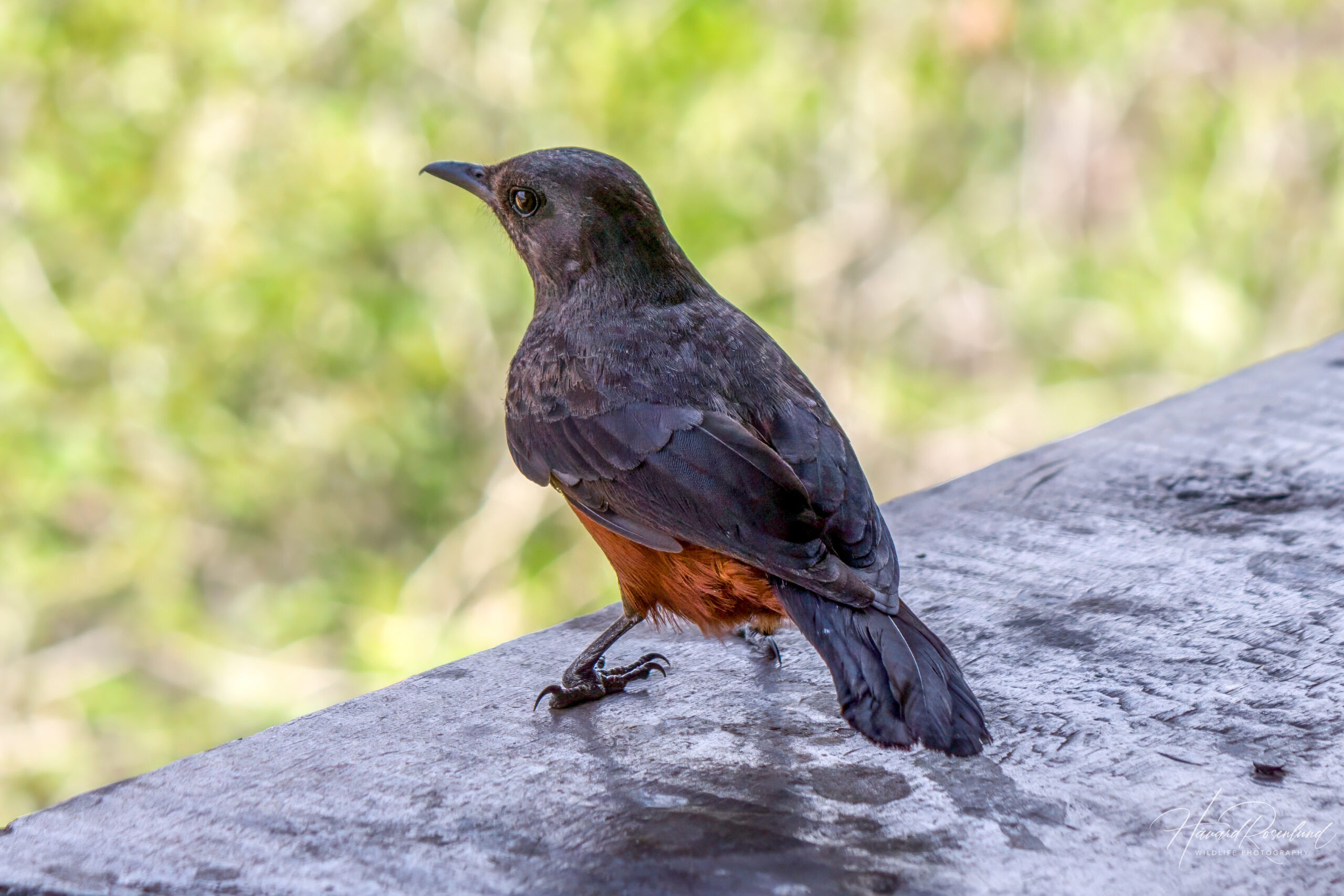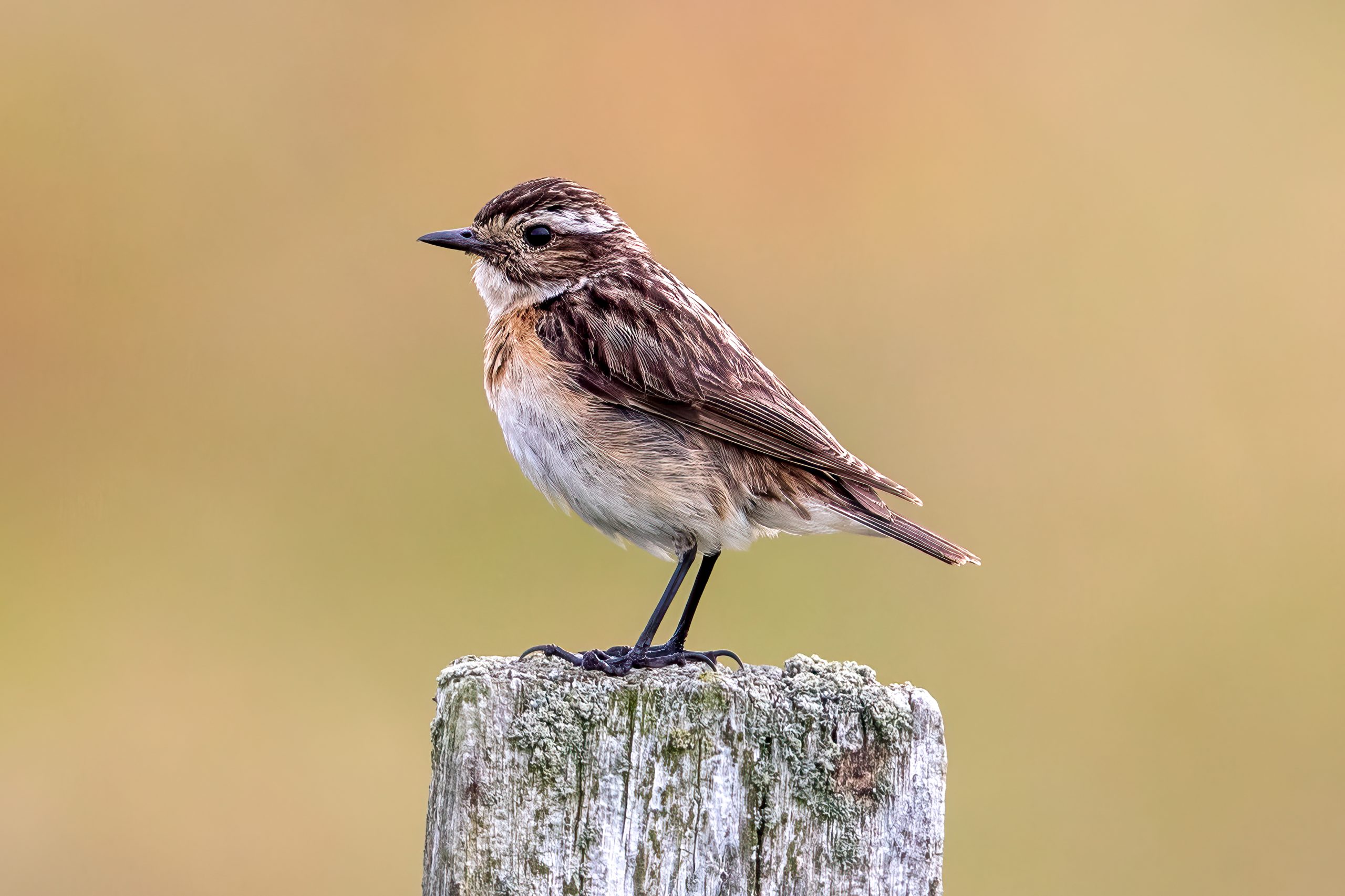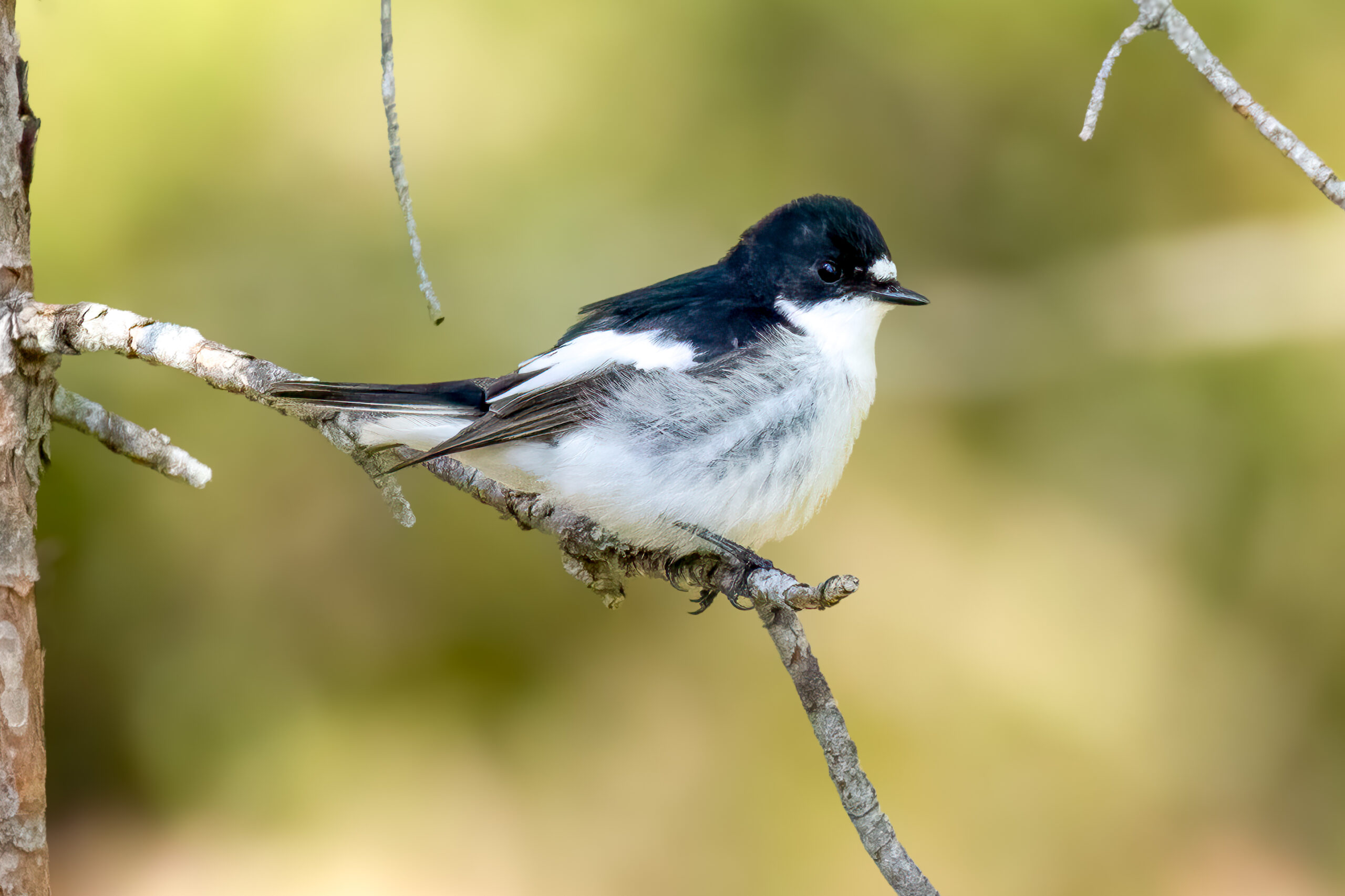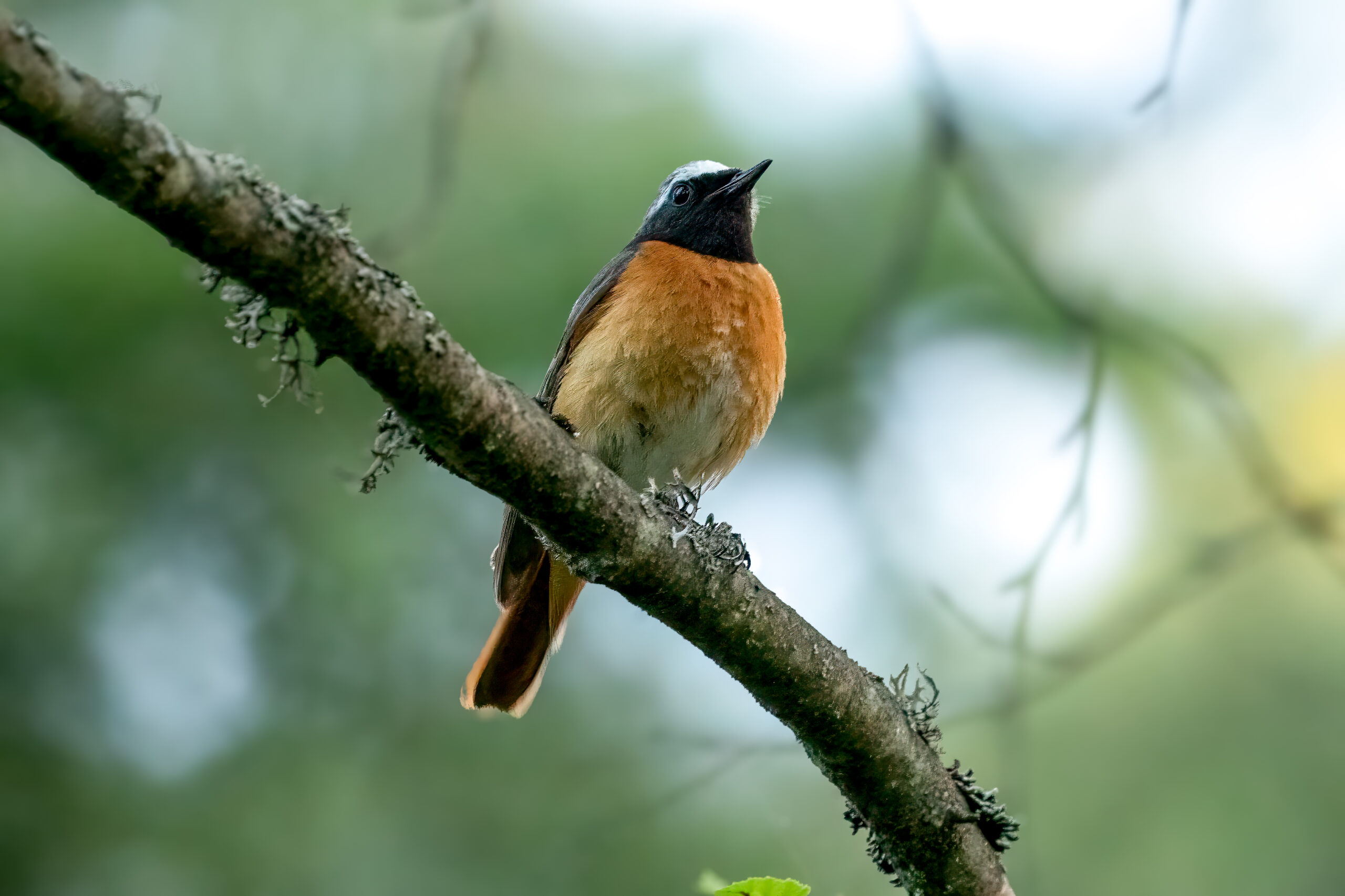Mocking Cliff-Chat
(Thamnolaea cinnamomeiventris)
Description
The mocking cliff-chat (Thamnolaea cinnamomeiventris) is a passerine bird found in sub-Saharan Africa. This species exhibits a distinctive size and appearance, typically measuring between 19 to 21 cm (7.5-8-3 in) in length. The male mocking cliff-chat is notable for its glossy black plumage and conspicuous white shoulder patches, while the female displays a more subdued dark brown coloration. One of the key identifying features for both sexes is the reddish-brown lower belly and vent, which contrasts with the darker feathers on the rest of its body. The mocking cliff-chat is known for its melodious and varied song, which includes a range of whistles, clicks, and mimicked sounds. It can be differentiated from similar species by its unique coloration, song, and habitat preferences.
Diet & habitat
Mocking cliff-chats are primarily insectivorous, feeding on a variety of insects and other small invertebrates. They often forage on the ground, flipping leaves and debris to uncover hidden prey. Occasionally, they may consume small fruits. Their preferred habitats include rocky outcrops, cliffs, and gorges in savannas and open woodland areas. The species’ adaptability to different environments has allowed it to thrive in both natural and modified landscapes, including urban areas.
Nesting
The breeding season of the mocking cliff-chat varies by region but generally occurs during the wet season. These birds are monogamous, with pairs often forming strong bonds. They exhibit territorial behavior, with males prominently perching on high points to sing and display. The female typically builds a cup-shaped nest in a crevice or on a ledge of a cliff or building. The nest is constructed using grass, leaves, and other plant materials. 2 to 4 eggs are laid, and incubation duties are mainly undertaken by the female and last for about two weeks. Fledglings usually leave the nest approximately three weeks after hatching. Parental care, including feeding and protection, continues for some time after the fledglings become independent.
Status
The mocking cliff-chat is widespread and abundant, facing no significant threats at a global level. It is classified as least concern on the IUCN Red List.




